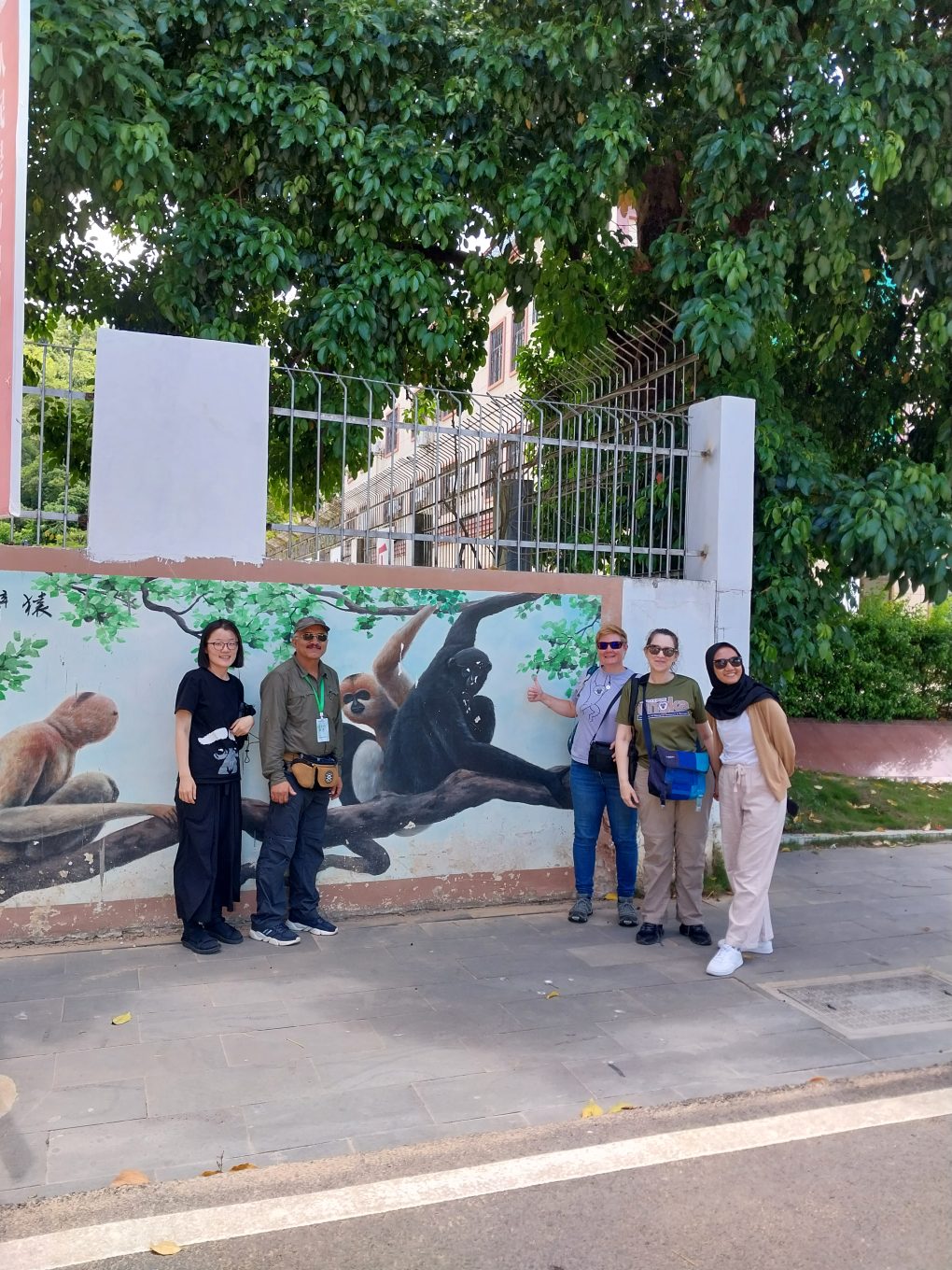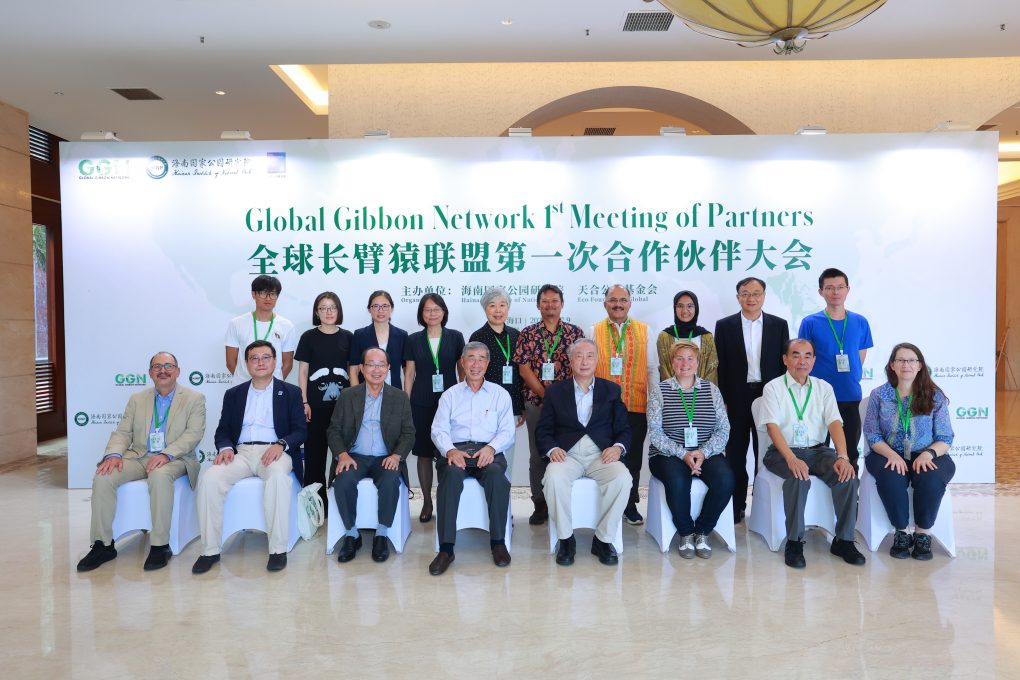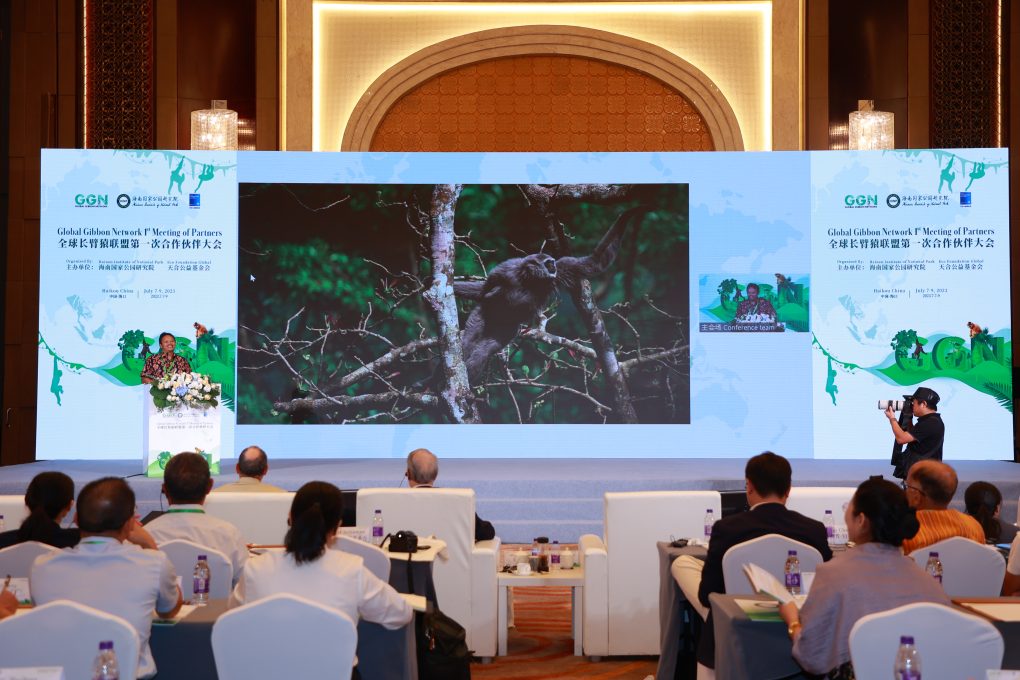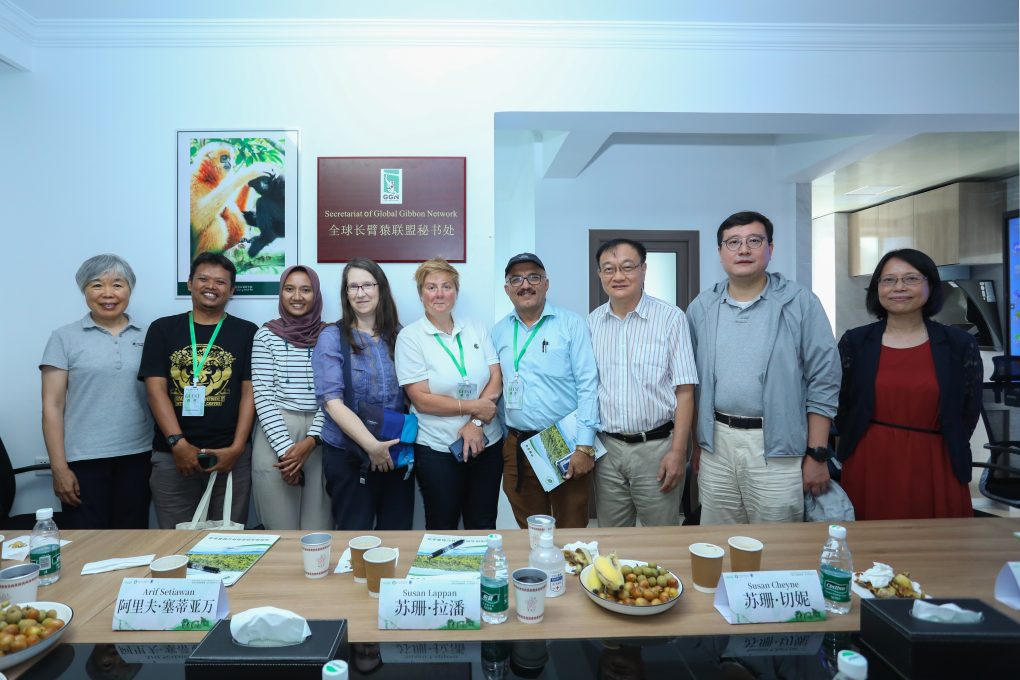written by Arif Setiawan
Hainan, 7-9 July 2023, swaraowa made history at the international level by joining the conservation alliance for gibbon species, called the Global Gibbon Network (GGN). The background for this collaboration is due to the existence of 20 species of gibbons in the world, as one of the important elements in tropical Asia, spread across 11 Asian endemic countries, where the existence of gibbons in their natural habitat is very important because it is also a center of biodiversity that continues to experience threats. Gibbons are very unique, with the behavior and characteristics of the habitat they use, they have strong family ties. Unfortunately since the 1900’s distribution and population have declined drastically, with populations remaining small in all of Asia’s tropical forests.
Indonesia is the largest country in terms of the number of gibbon species, 45% of the world’s gibbons (9 species) are in Indonesia, and some of them are protected in conservation areas but there are still many other parts of their habitat that are not fully protected outside conservation areas, even 2 species of gibbons in Indonesia are West Kalimantan Hylobates abbotti and Hylobates funnerreus in North Kalimantan have not been included in the list of protected species by Indonesia regulation. Threats continue to occur due to loss of forest habitat and trade.
The Global Gibbon Network was first initiated in 2020 (during the pandemic) and was organized by two institutions in China through Ecofoundation Global and the Hainan Institute of National Park. The next series of meetings were carried out online and officially invited other institutions in the gibbon habitat to join together as founding partners and announced at the World Gibbon Day event on 24 October 2022, together with the IUCN Section on Small Ape. Swaraowa’s participation in this is due to the similarity of vision and mission in conserving gibbons.
The meeting on 7-9 July 2023 was the first offline meeting held by GGN as an organization with its founding partners. This event was sponsored by Eco Foundation Global and Hainan institute of National Park which officially invited representatives of the founding partners to Haikou, Hainan Island. Hainan Island was also chosen because it is the habitat of the world’s rarest gibbon Hainan Gibbon (Nomascus hainanus) whose current population is only 37 individuals.
Taking place at the Pullman Hotel Haikou, the provincial capital of Hainan, nearly 120 experts, researchers and gibbon conservation activists from ten countries and regions as well as representatives from fifteen international organizations and foundations as founding partners of GGN gathered to discuss establishing a long-term conservation mechanism for gibbons.
I represent SwaraOwa as Indonesia based gibbon conservation organization, in this meeting as one of the keynote speakers conveying the experience of swaraowa activities for Owajawa (Hylobates moloch) in Pekalongan through an entrepreneur and conservation approach that has been carried out by swaraowa for approximately 10 years, as an example of sustainable conservation initiatives to increase the added economic value of products forest products around the gibbon habitat, with the involvement of local communities and at the same time for the protection of gibbon habitat outside the conservation area. The Owa Coffee project, which was developed from the grassroots level to the global market, is an example of an independent funding scheme for gibbon conservation in Central Java. In addition, I also convey the activities of the Indonesian gibbon working group which is compiling a road map for the conservation of 9 speciees of gibbons in Indonesia, where this roadmap was prepared by practitioners and researchers for the purpose of providing guidance for related parties who have concerns for gibbon conservation with various development plans. , climate change, forest fire, commodities and policies at the national and regional levels.
This meeting also at the same time inaugurated the GGN secretariat which is in the building at the Hainan Institute of National Park. Furthermore, a secretariat team will be formed and coordinated from here for the next operation of GGN activities.
The supporting partner meeting was closed with a visit to the Bawangling Nature reserve which is the habitat of the Hainan gibbon. During the last 70 years, the gibbon population on this island, which was initially spread throughout the forest on the island, dropped dramatically to 99.9%, and in the 1950s it was recorded there are only 7-8 individuals. Forest loss is the main reason for the extinction of the Hainanese gibbon. However, thanks to the efforts of various parties and the Chinese government, the current population has increased to 37 individuals, which are divided into 5 groups.

A relatively short time of only half a day, it was not possible to see the Hainan gibbons directly, we were invited to see the information center and some of the locations in Bawangling which became tourist visits. However we spotted gibbons as local pride here, murals on the wall in the road to Bawangling nature reserve. We were invited to discuss with representatives of the field team and what was really astonishing was the real time monitoring equipment used to monitor the Hainan gibbon. This command control room is connected to cameras that work automatically to monitor the movement of the Hainan gibbon. Highly sophisticated resource support to assist Hainan gibbon conservation activities.


